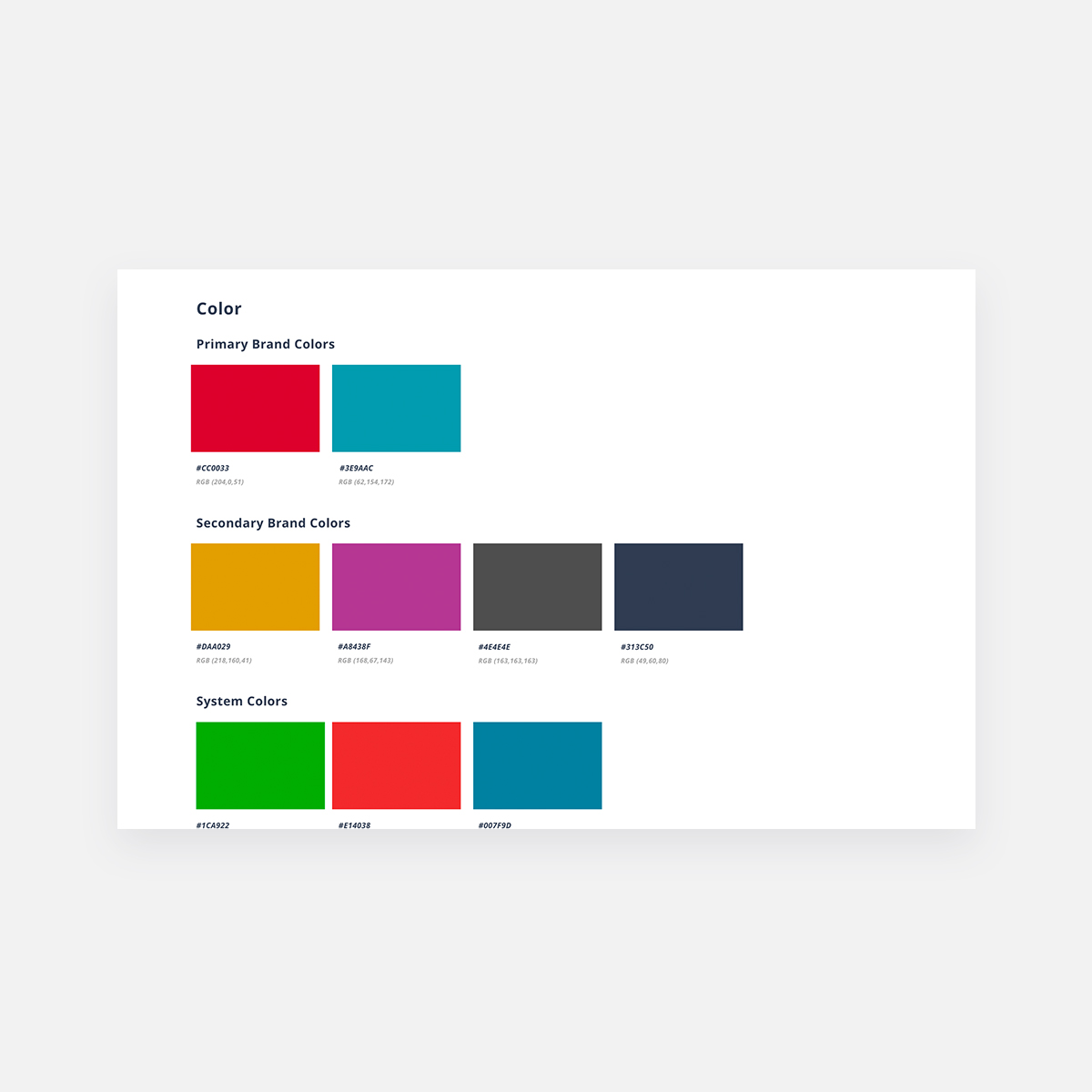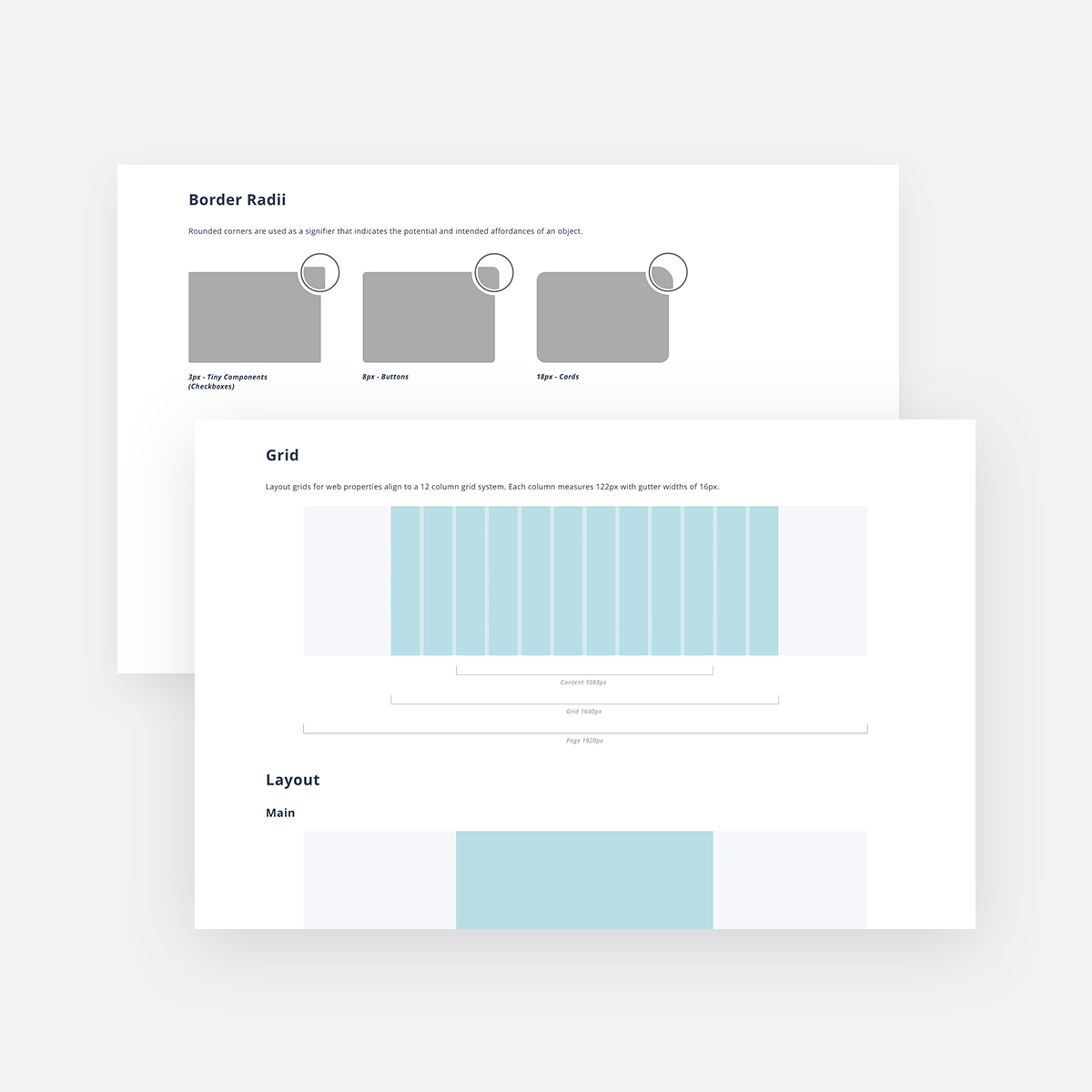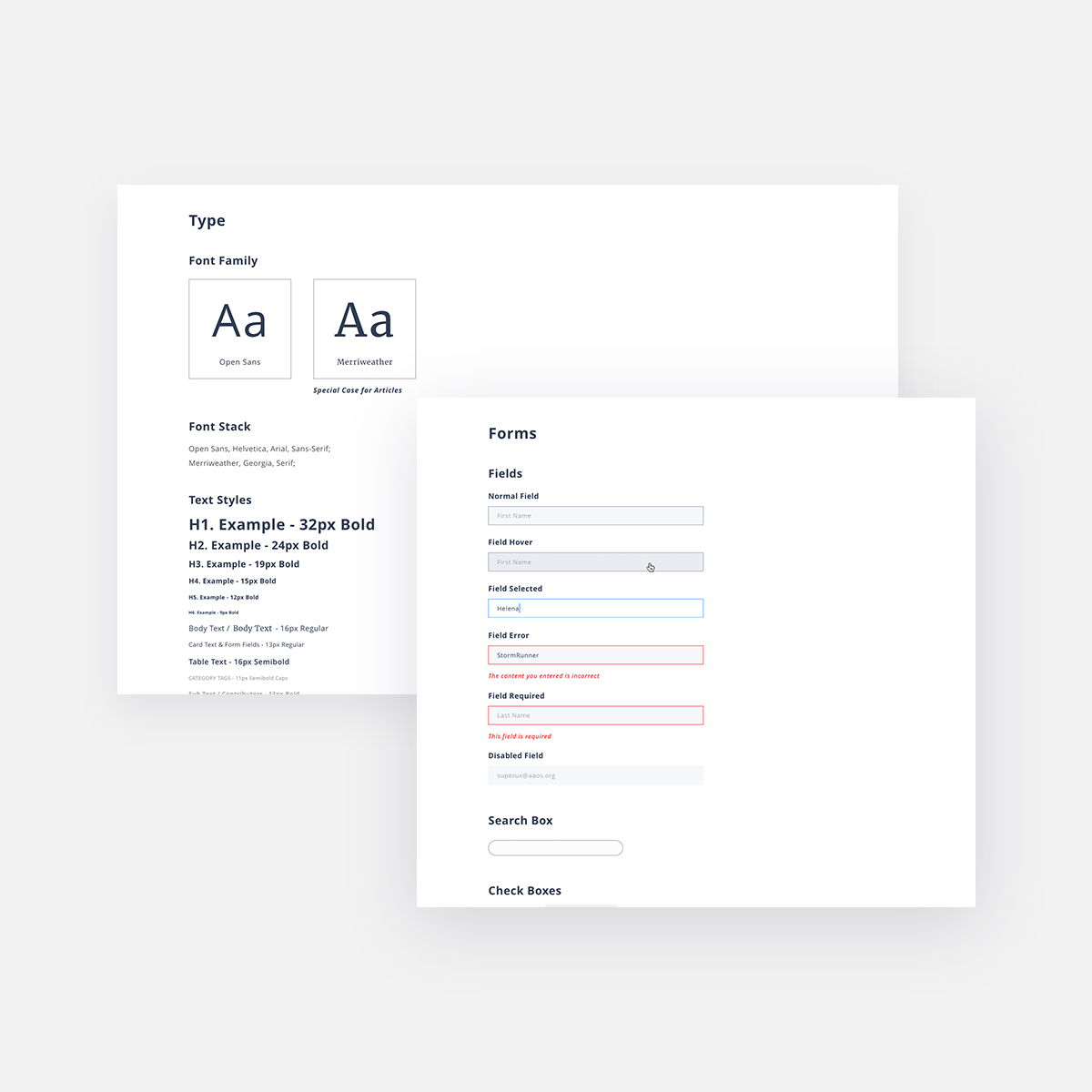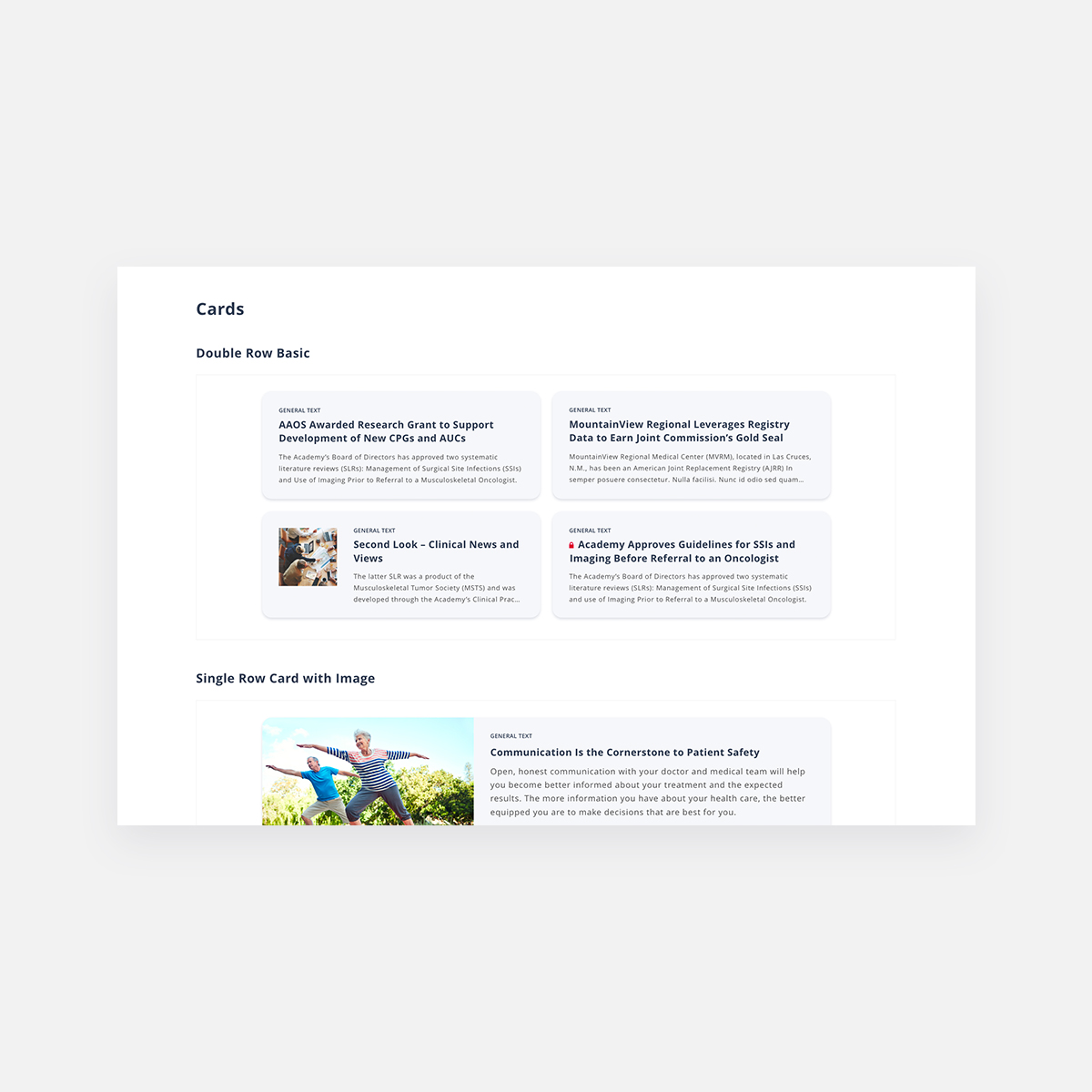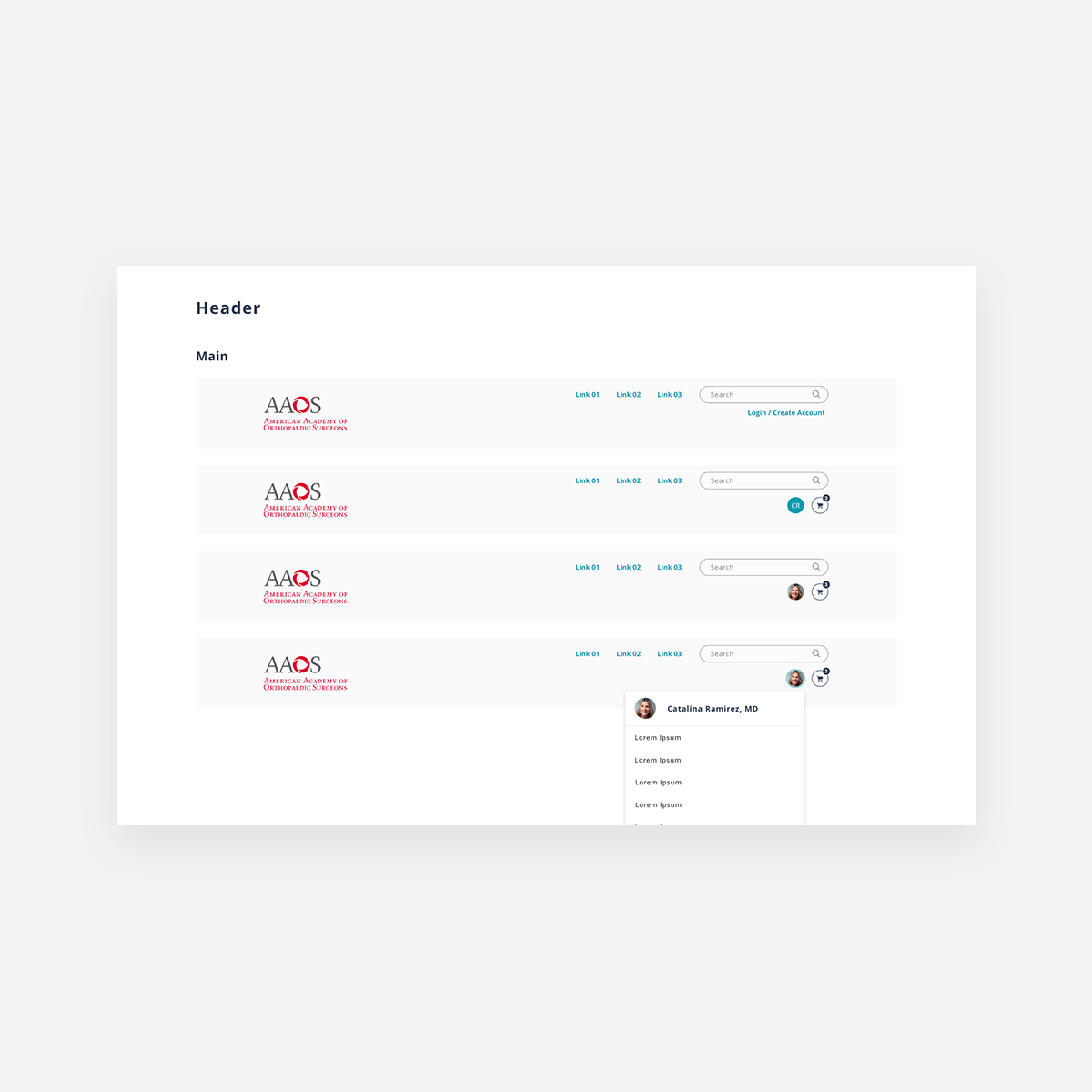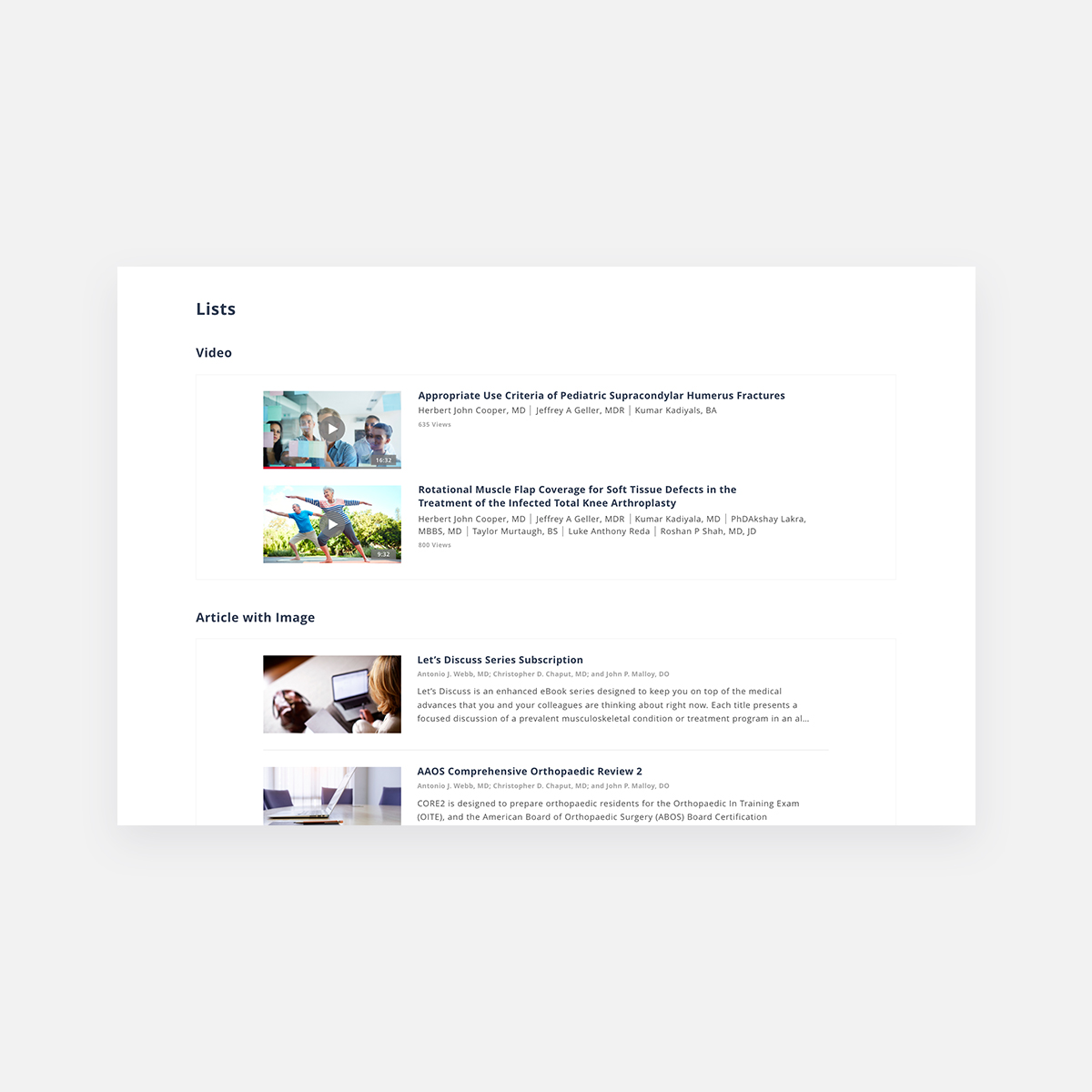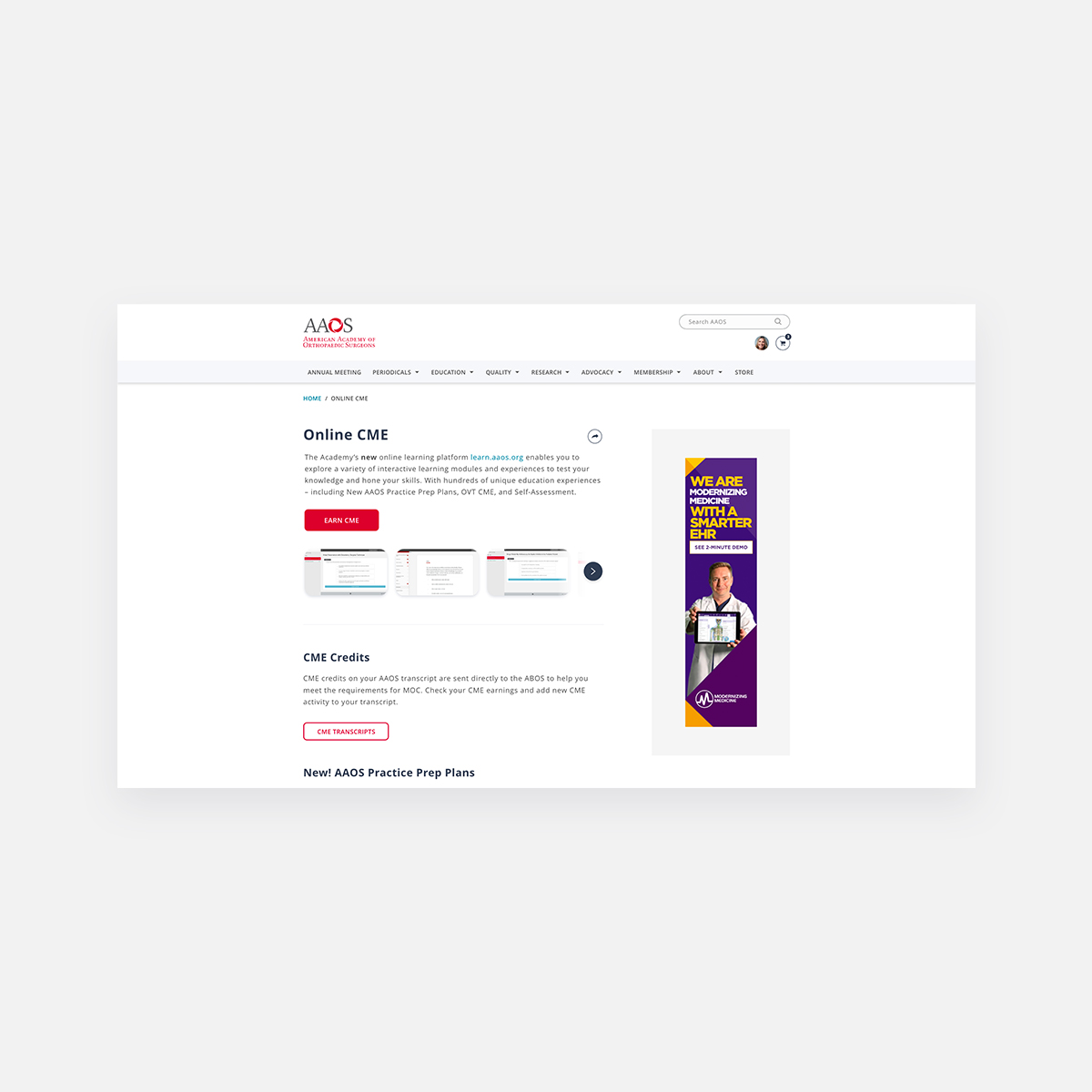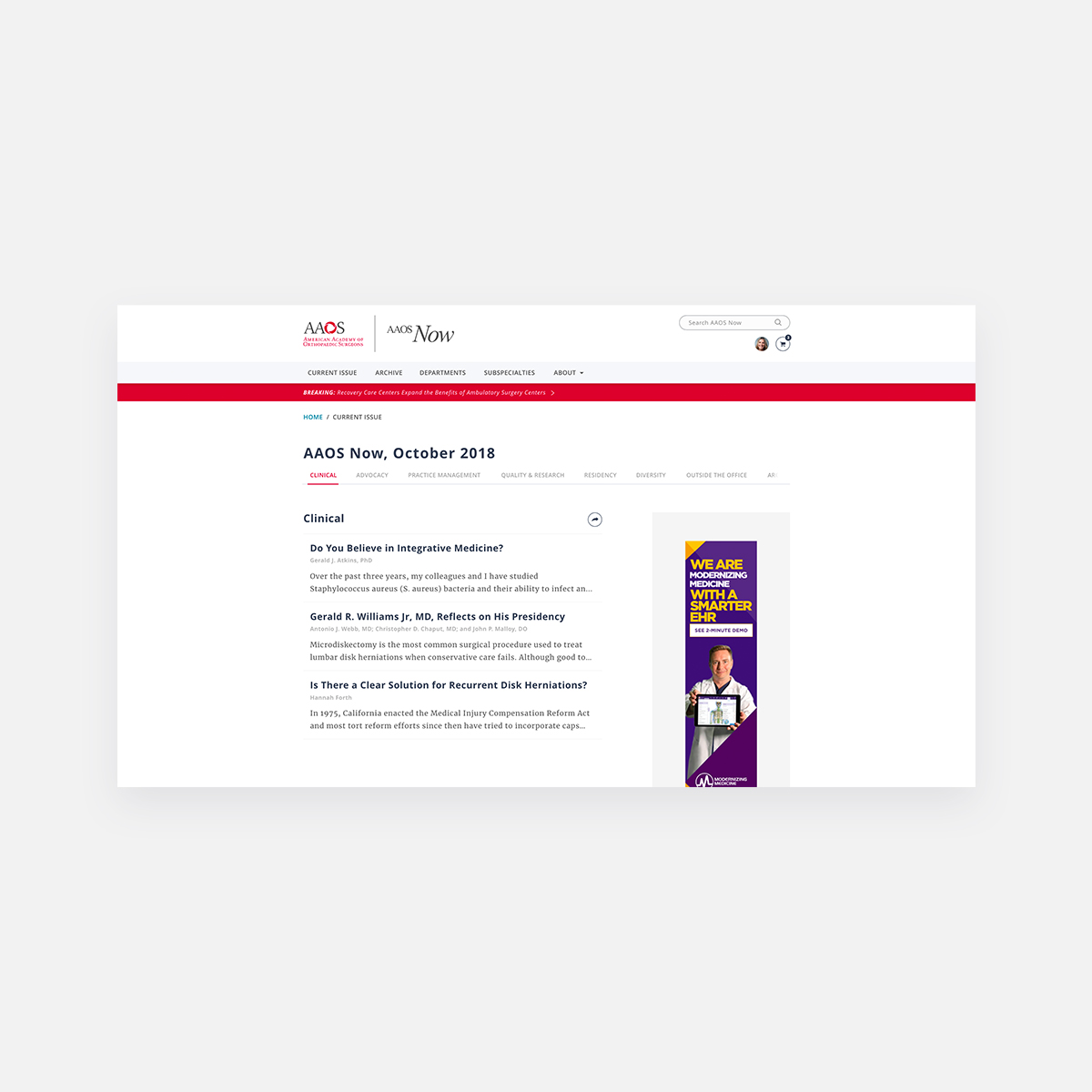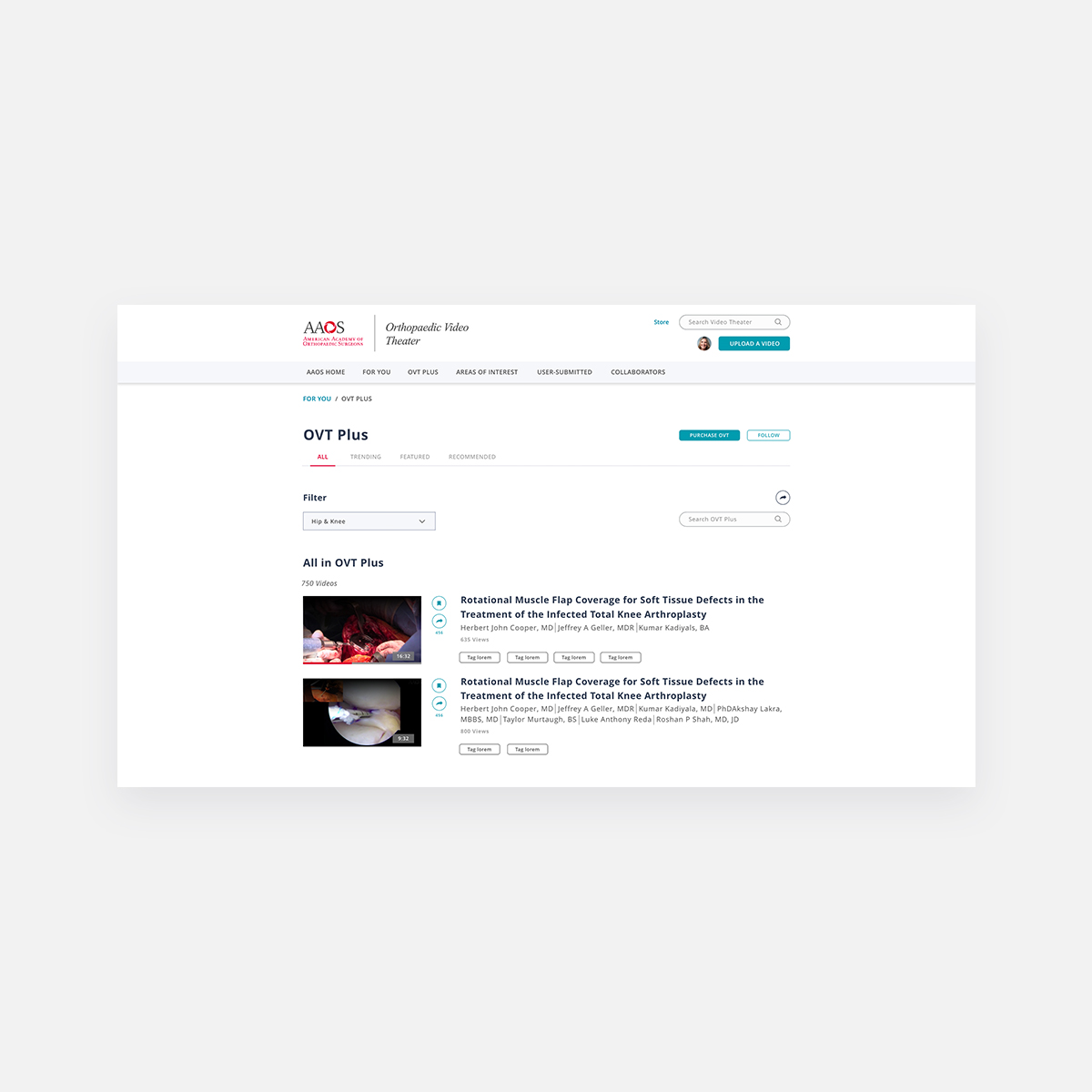Project Description
Canopy
Canopy is the American Academy of Orthopaedic Surgeons design system.
Challenges
The goal of this project was to establish a unified design language across various channels within our organization. Like many organizations, our business units operated independently, resulting in a fragmented user experience. Recognizing this challenge, there was a clear need for an organization-wide design system.
Subject matter experts from every department were involved in this ambitious initiative, highlighting the project’s scale and complexity. The first major hurdle was convincing the organization of the necessity for a design system, which was addressed through a series of presentations that outlined user pain-points across six channels.
To begin, I conducted an inventory of all digital products owned by the Academy, collaborating with different business units to compile a comprehensive list and document their functionalities. This information was then consolidated and shared with stakeholders facilitating ongoing updates and alignment.
Despite sharing similar functionalities, each site presented these features differently, leading to user confusion. Through research, we identified the critical need for visual and functional consistency. To address this, I developed a component map illustrating how various design elements interacted, advocating for a user-centric approach and demonstrating to stakeholders the challenges members faced.
Using Adobe XD, I designed and tested each component with members using Lookback, aiming to elevate design as a strategic asset within the organization while empowering business units to create unique, effective solutions aligned with both business objectives and member needs.
The pilot program for Canopy, starting with AAOS Now, proved highly successful in enhancing member experience within an organization that previously undervalued human-centered design. Despite achieving favorable outcomes, the project provided valuable lessons for the Academy’s future endeavors. For instance, dedicating a designer to maintain the design library would ensure ongoing accessibility and effectiveness of each component. This approach would also enable other designers to focus on specific user problems within products, thereby improving net promoter scores and overall user satisfaction.

